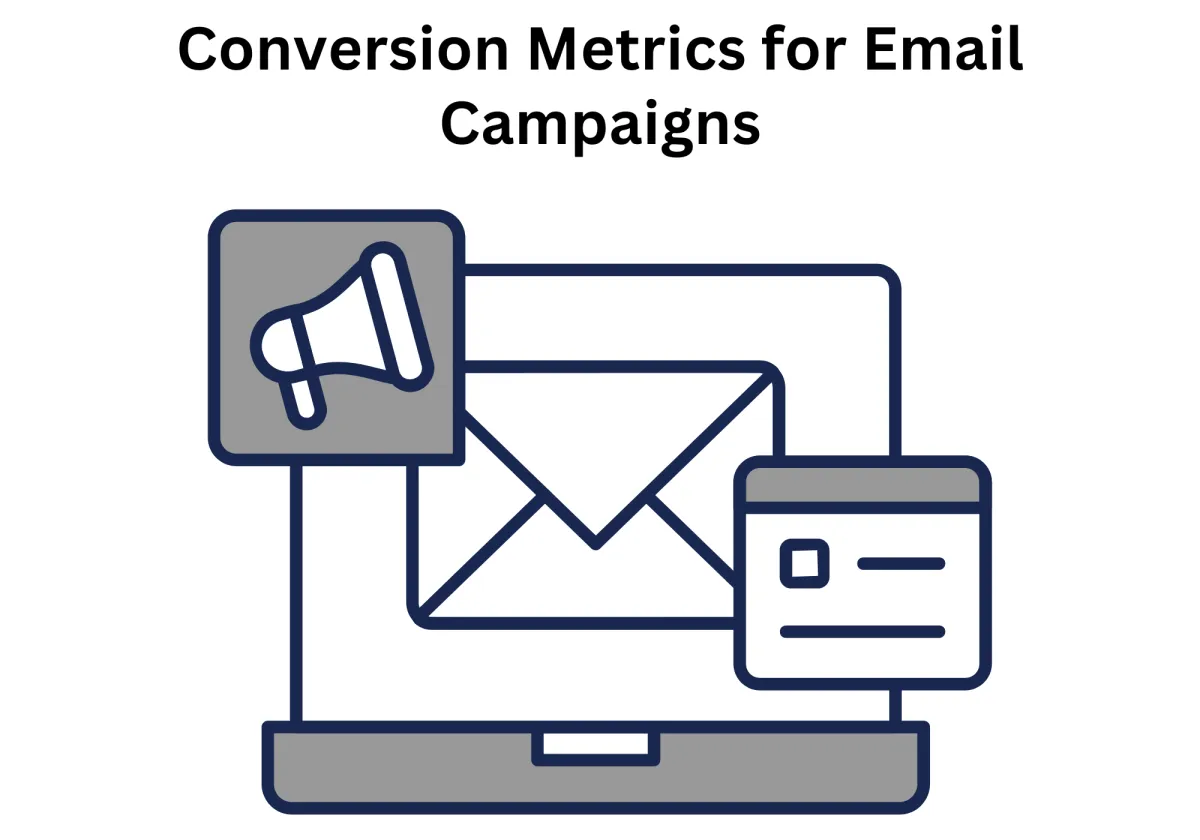
Unlocking Real Email ROI: Track Revenue and Conversions in Your Campaigns Like Never Before
Email marketing has long been one of the most powerful tools in the digital marketing arsenal. From building relationships to nurturing leads and driving conversions, email campaigns can generate impressive returns—if executed and measured correctly. While open rates and click-through rates are commonly tracked metrics, they don’t tell the full story of impact. What truly matters to marketers and stakeholders alike is how much revenue an email marketing campaign is actually generating.
To meet this demand for deeper insight, a major update has been introduced: a dedicated Email ROI feature within your CRM. This new functionality empowers you to go beyond surface-level analytics and accurately track revenue attribution, giving you concrete data to back the success of your marketing efforts.
What Is the Email ROI Feature?
The Email ROI feature is an advanced analytics tool built into your CRM's email marketing campaign module. It gives marketers the ability to view the exact revenue generated by each email campaign, offering a level of transparency and accountability that standard metrics simply cannot deliver.
At its core, the feature is designed to connect customer purchase behavior directly to email engagements using a Last Touch Attribution model. This means the last email campaign opened before a purchase will receive the revenue credit for that transaction.
Whether you're running promotional campaigns, product announcements, or re-engagement sequences, the Email ROI dashboard provides real-time insights into:
Total revenue generated per campaign
Revenue per recipient
Conversion orders and associated customer data
Attribution window customization
This makes it easier than ever to validate campaign performance and optimize future strategies based on actual monetary impact.
Why Email ROI Metrics Matter
1. Transparent Revenue Attribution
Traditional metrics like open rate or click rate offer only partial insights into campaign performance. With the Email ROI feature, you can now clearly see how much money each campaign brings in, which provides a more accurate representation of marketing success.
This data allows for better decision-making, such as:
Identifying which email topics or promotions resonate most with your audience.
Understanding buying patterns post-email engagement.
Evaluating which sequences are underperforming or excelling in terms of revenue.
2. Enhanced Client Communication
For agencies and service providers, it’s often challenging to explain marketing results in a way that resonates with non-technical clients. With real revenue figures at your fingertips, you can now demonstrate the true financial value of your marketing efforts.
This feature helps you:
Show clients the tangible return on their investment.
Build long-term trust and credibility.
Justify strategy changes or increased budgets based on real results.
3. Flexible Attribution Window
Not all customers buy immediately after opening an email. Some may return days or even weeks later. That’s why the feature includes a customizable attribution window, which you can adjust from the default 5 days up to 60 days.
This flexibility enables you to:
Better align attribution tracking with your sales cycle.
Analyze behavior across longer buyer journeys.
Avoid missing out on delayed conversions.
How the Attribution Model Works
The Email ROI feature uses the Last Touch Attribution model to determine which email campaign gets credit for a sale. This model is designed for clarity and ease of use, offering a straightforward way to connect revenue with specific email interactions. It’s especially useful in marketing environments where multiple emails are sent over a period of time, but only the final interaction triggers a conversion.
Here’s how it works:
Only the last opened email before a purchase receives credit
If a user opens several campaigns over a week but places an order after the most recent one, that last email is attributed for the sale—even if earlier messages contributed to the decision.
Simplifies multi-touch journeys
While many customers engage with multiple emails, the Last Touch model focuses on the final point of influence. It reduces attribution complexity while still offering valuable insights into which emails actually drive action.
Reflects real-world decision-making
In many cases, a specific email—like a time-sensitive offer or product reminder—is what ultimately convinces the customer to buy. This model highlights those decisive interactions.
Ideal for campaign optimization
Marketers can use this data to analyze which campaigns consistently lead to conversions. This helps fine-tune strategies around subject lines, timing, CTAs, and content that effectively close the sale.
Customizable attribution window
The default window is set to 5 days but can be extended up to 60 days, ensuring flexibility in how long a campaign can receive credit for a sale.
Applies to relevant campaigns
You can choose whether to track attribution for all campaigns or only those containing product elements, depending on your strategy.
Integrated automatically within the CRM
No manual setup is required—revenue tracking and attribution are handled seamlessly, giving you a clean, reliable view of what’s working.
By focusing on the last impactful email, this model provides actionable insights that are easy to interpret and apply. For most teams, it strikes the right balance between simplicity and meaningful revenue analysis.
How to Use the Email ROI Feature: Step-by-Step Guide
To start tracking conversion metrics and revenue from your email campaigns, follow this easy walkthrough:
1. Go to the Marketing Tab
From the left-hand navigation menu in your CRM, click on Marketing, then go to Emails > Campaigns.
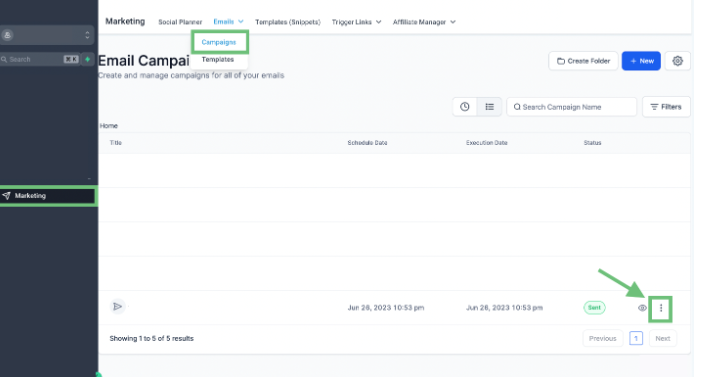
2. Create or Edit a Campaign
You can either start a new campaign or click the three-dot icon next to an existing one to edit it.
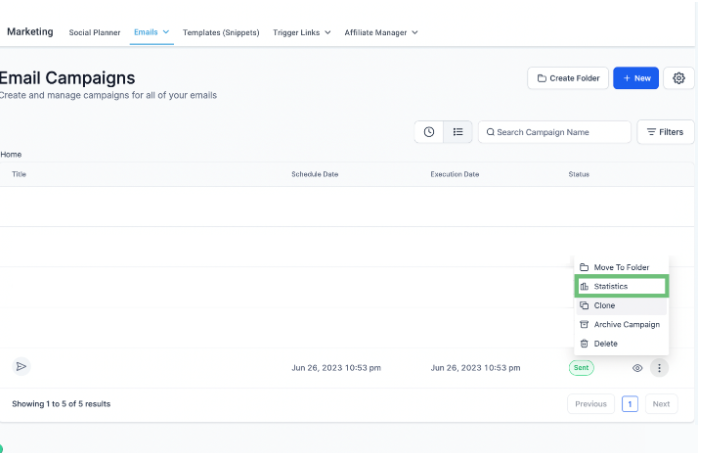
3. Open Campaign Statistics
Once inside the campaign editor, click on the Statistics tab to view performance data.
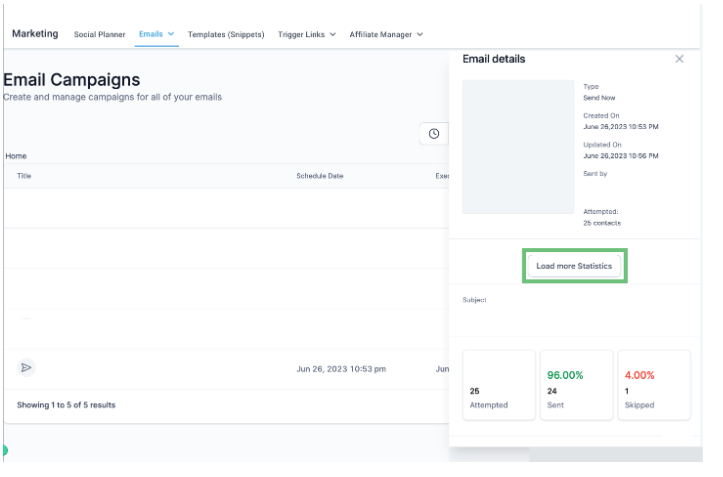
4. Load Additional Metrics
Click on "Load more statistics" to access expanded insights beyond basic open and click rates.
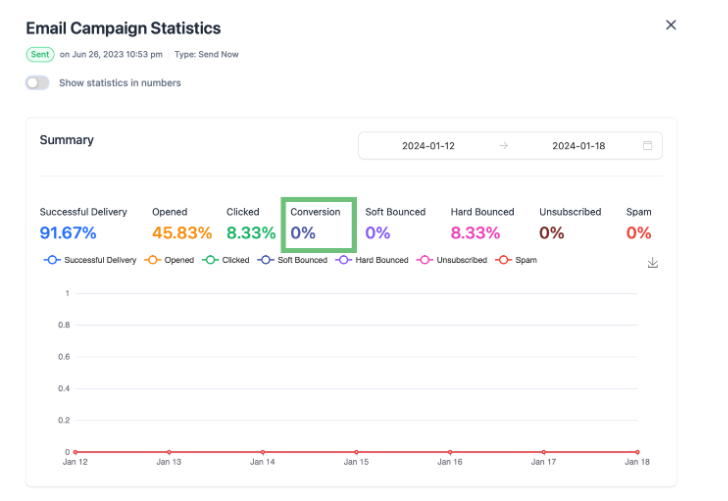
5. Enable Numeric View
Turn on the toggle to display statistics in numerical format for clearer interpretation.
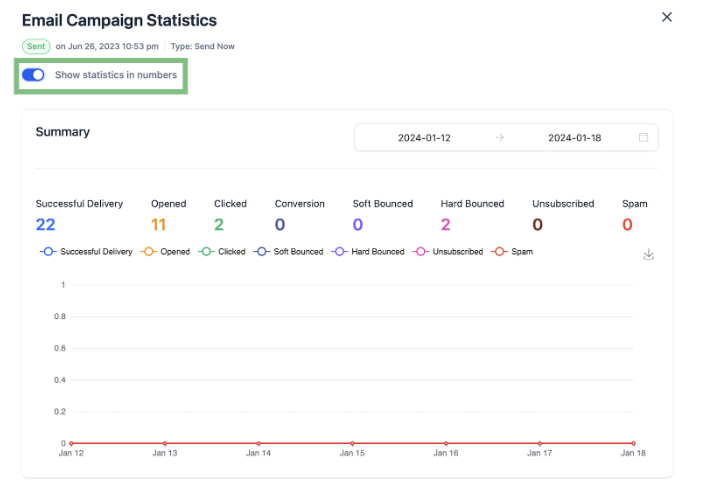
6. Check the Conversion Section
In the summary view, locate the Conversion section. Here you’ll see metrics like total revenue generated and revenue per recipient.
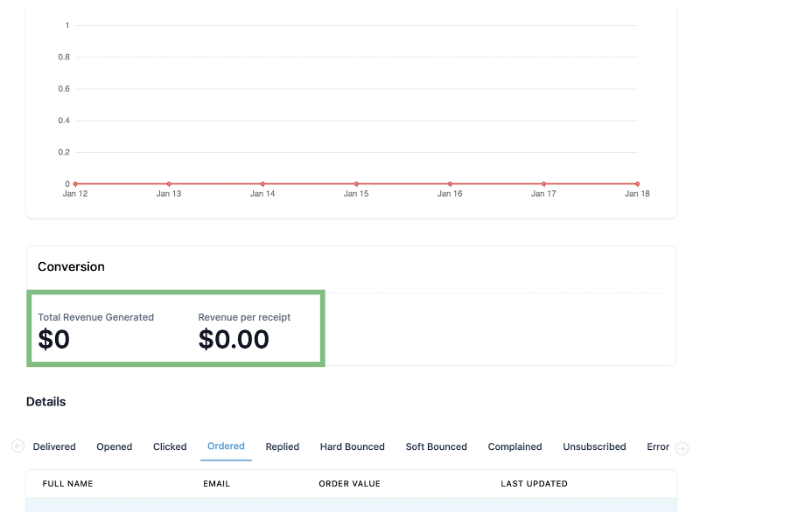
7. View Detailed Order Data
Navigate to the "Ordered" tab in the Details section to see which contacts made purchases and view their order details.
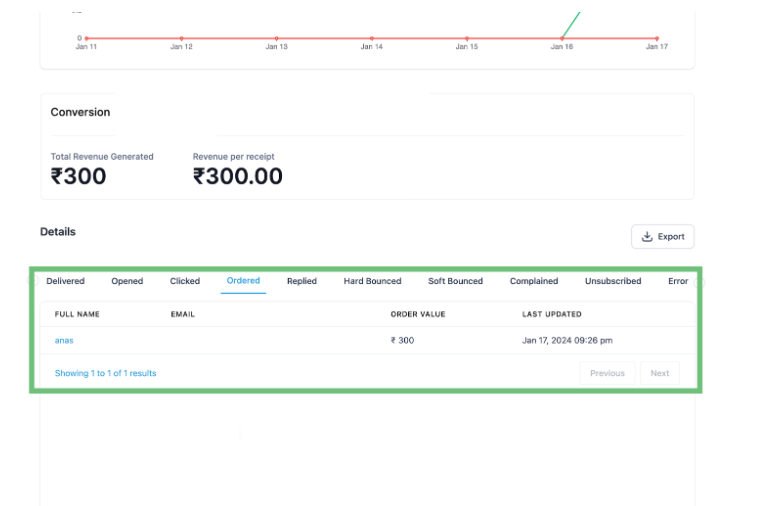
8. Edit the Attribution Window
Go to Settings to customize the attribution window. By default, it's set to 5 days, but you can extend it up to 60 days.
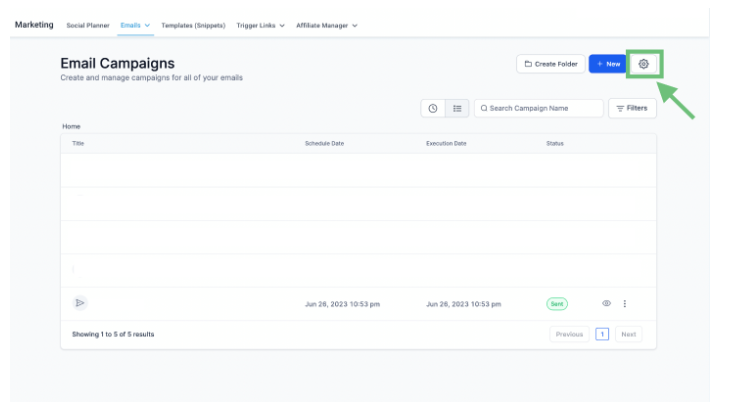
9. Understand Attribution Logic
The system uses the Last Touch Attribution model. The most recent email campaign opened before a purchase gets credit for the conversion. You can choose whether attribution applies to all campaigns or only those with product elements.
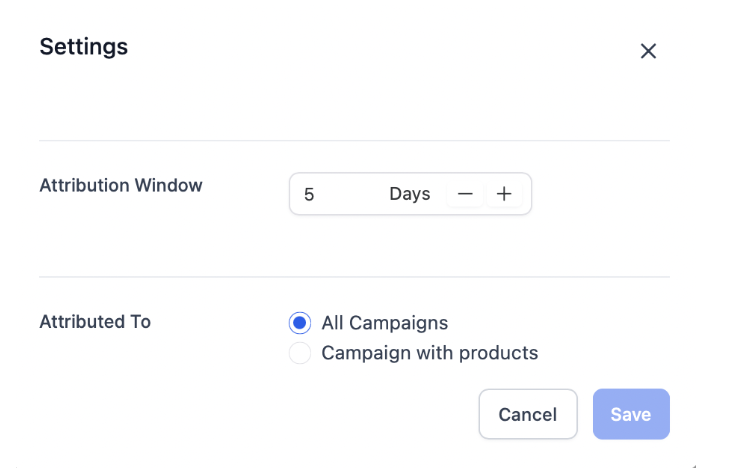
Best Practices for Maximizing Email ROI Insights
To fully benefit from the Email ROI feature, consider these technical and strategic best practices:
Segment Campaigns with Clear Intent
Ensure each email campaign is designed with a specific conversion goal (e.g., product sales, upsells, renewals). This will make attribution more meaningful and easier to analyze.
Sync E-commerce and CRM Data
Make sure your CRM is properly integrated with your e-commerce platform or checkout system. This allows for seamless order tracking and revenue attribution without data discrepancies.
Use Dynamic Content and Personalization
Campaigns that include personalized product recommendations or dynamic pricing often result in higher engagement and revenue. Tracking the ROI of these emails helps you measure their true impact.
Test Attribution Windows
Try different attribution windows based on your customer journey. A fast-moving product might benefit from a 5-day window, while high-value or complex purchases may need 30 to 60 days for full attribution.
When to Rely on Conversion Metrics in Email Campaigns
The Email ROI feature is most powerful when used in situations where revenue attribution can influence strategy and decision-making. Here are key moments when relying on conversion metrics can provide meaningful value:
Promotional Campaigns
When launching product announcements, flash sales, or limited-time offers, conversion metrics help measure how much revenue each email generates, allowing for more accurate performance tracking.
A/B Testing
If you're testing different subject lines, CTAs, or content layouts, revenue data shows which version actually drives more sales—not just more clicks or opens.
Seasonal Sales Campaigns
During high-impact periods like Black Friday, Cyber Monday, or holiday promotions, conversion tracking helps attribute sales directly to specific emails, making it easier to evaluate success and plan future seasonal strategies.
Budget Justification
For internal teams or agencies, being able to tie email campaigns to actual revenue makes it easier to justify marketing spend and demonstrate ROI to clients or stakeholders.
Identifying Top-Performing Content
Use revenue-based insights to determine which emails, formats, or offers consistently perform well. This lets you replicate or scale successful strategies with confidence.
By focusing on these key areas, conversion metrics allow you to go beyond engagement stats and make data-driven decisions rooted in real business outcomes.
Final Thoughts: Real Revenue, Real Results
This new feature transforms how businesses measure the effectiveness of their email marketing. Instead of relying on basic metrics like opens and clicks, you now have access to actionable revenue data that connects email efforts to business outcomes.
Whether you're optimizing your next campaign or preparing a client report, the Email ROI feature delivers unmatched visibility and precision. You’ll not only prove the value of your email marketing—you’ll improve it.
Ready to elevate your email strategy? Start using Zapiy today and turn clicks into cash with your CRM’s Email ROI tracking.


Youtube
Facebook
Instagram
LinkedIn
TikTok
X
Pinterest